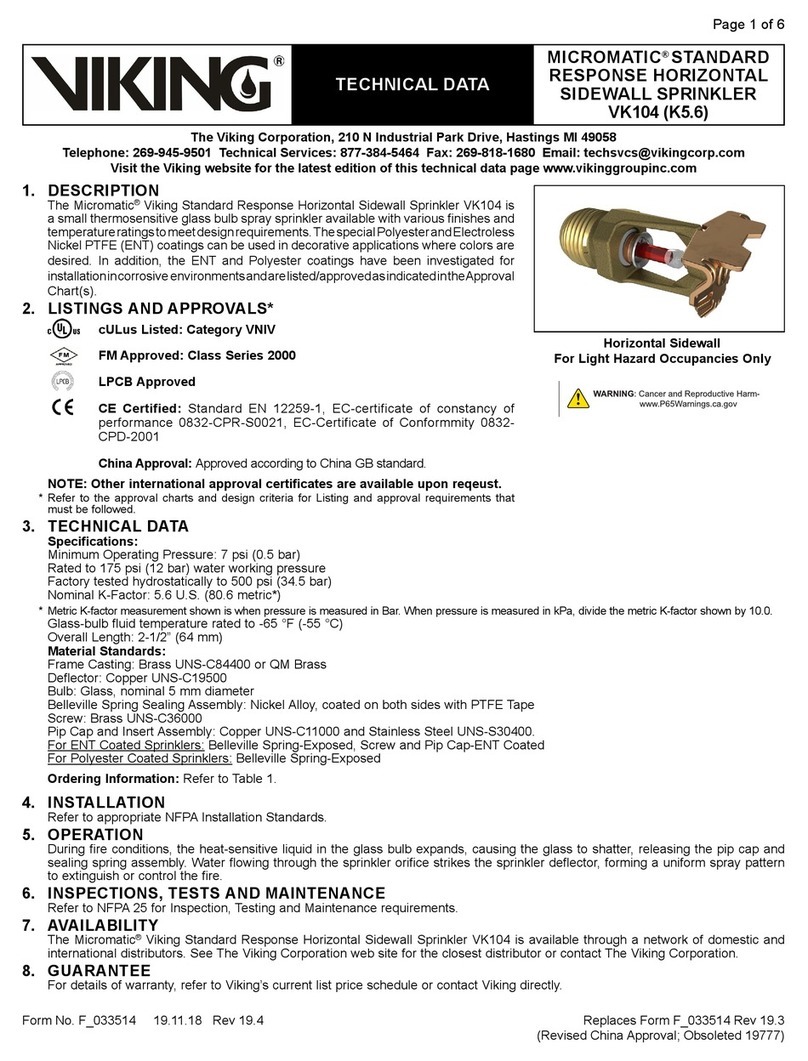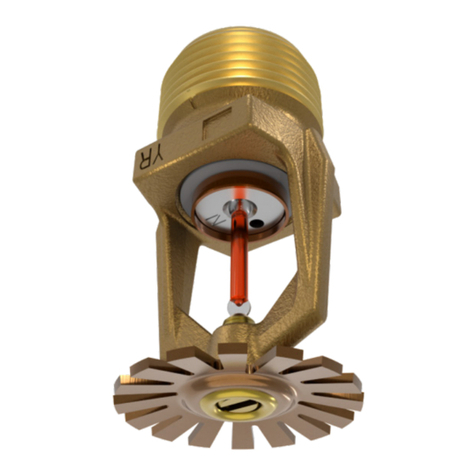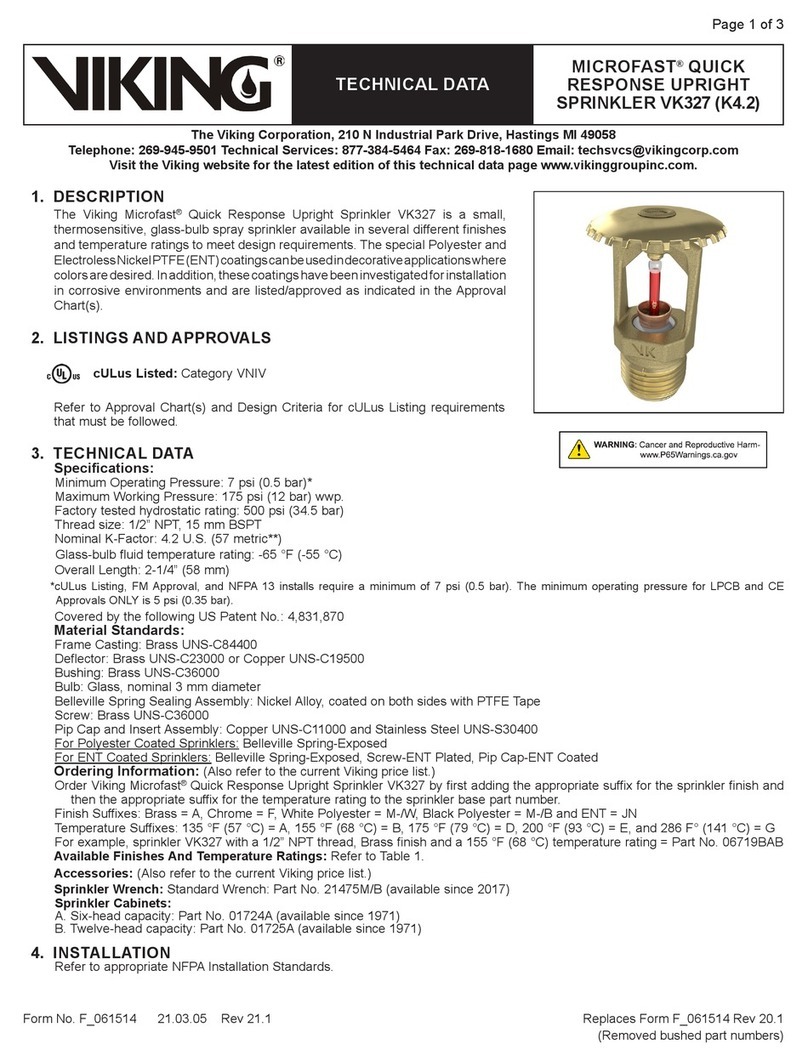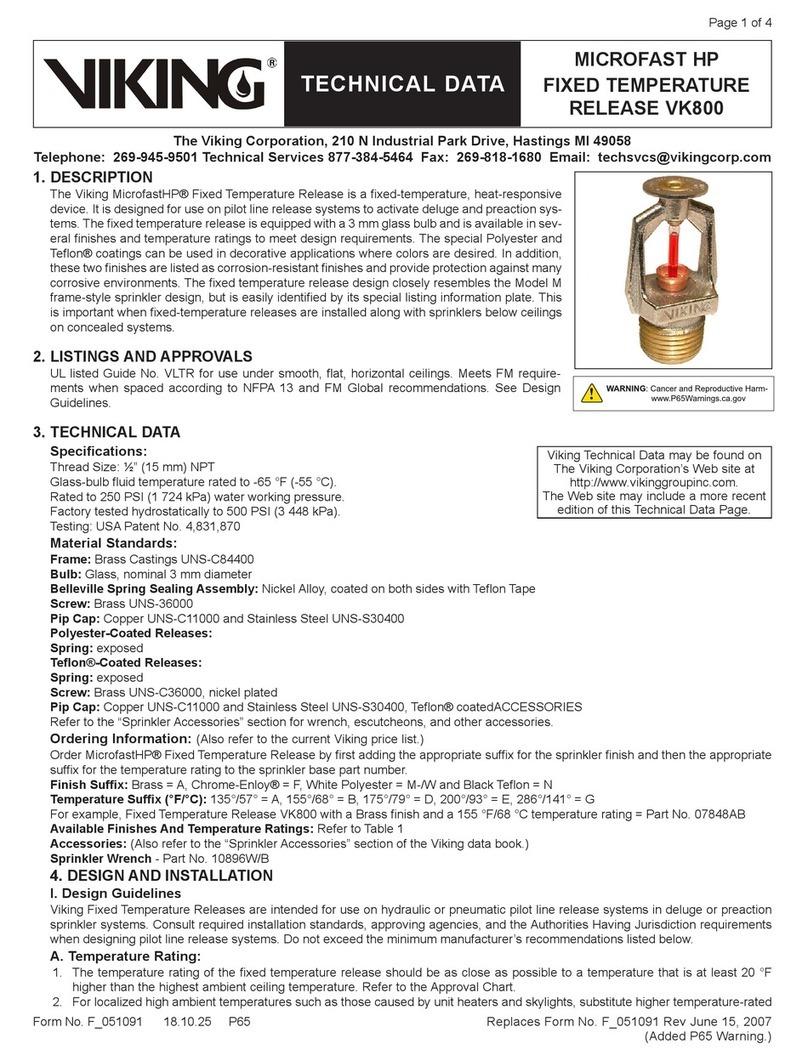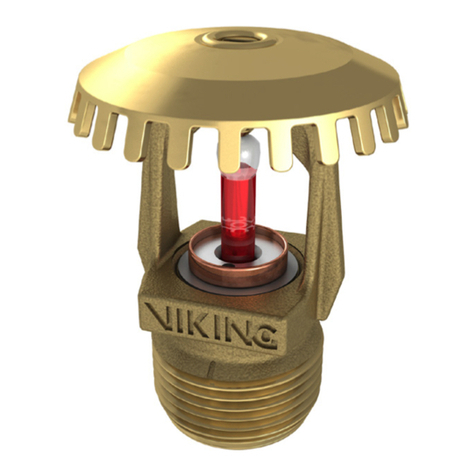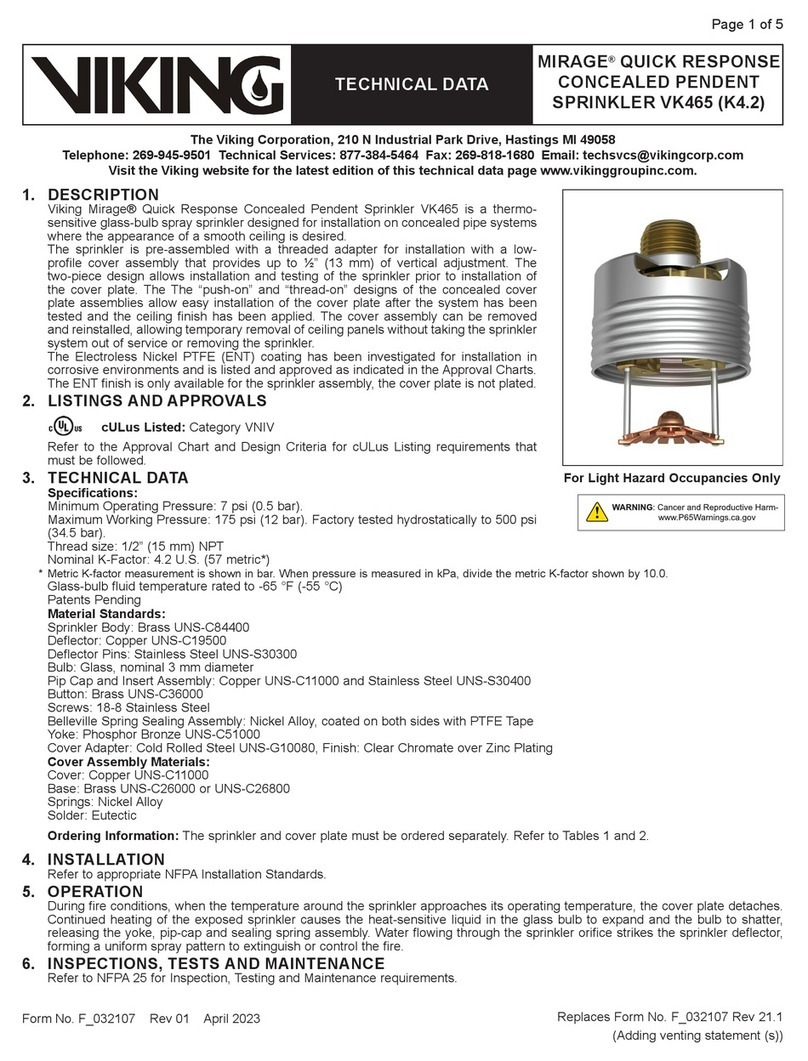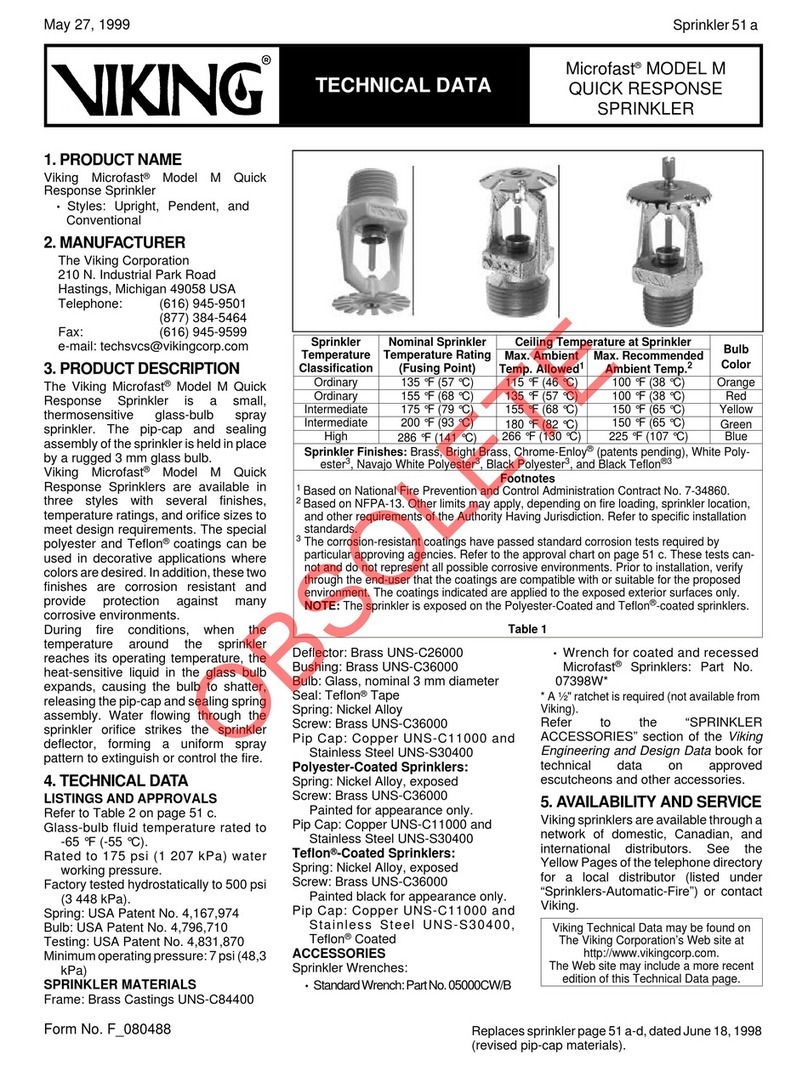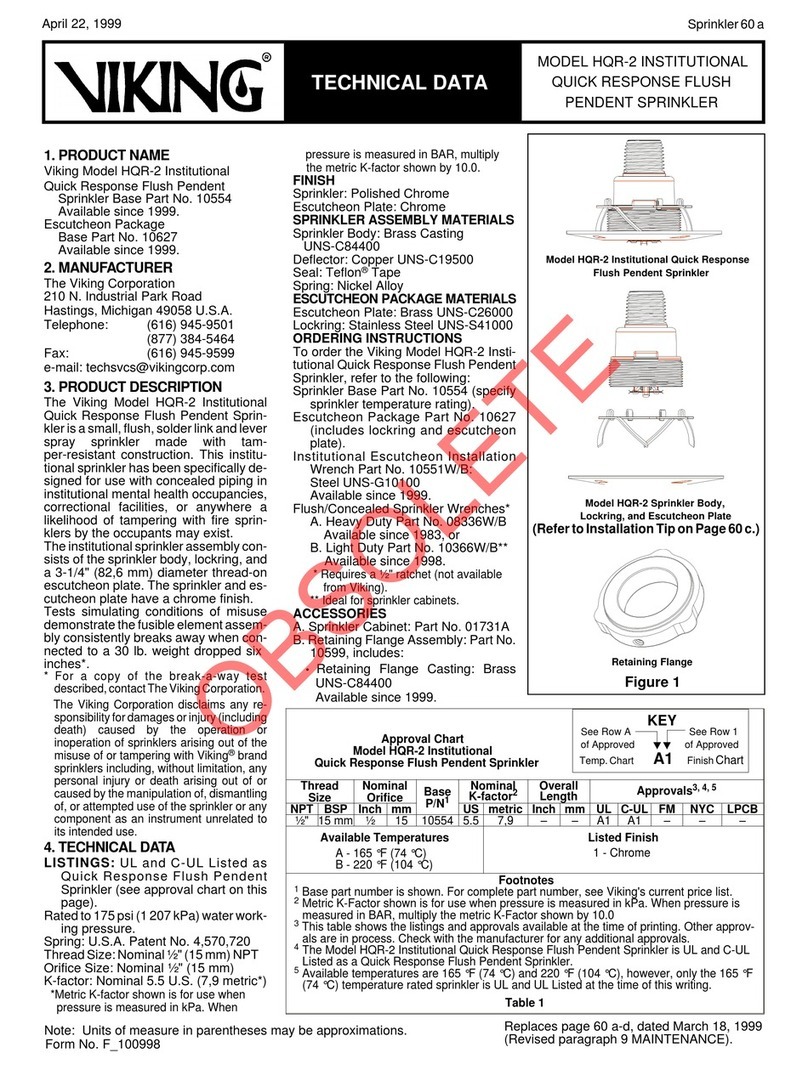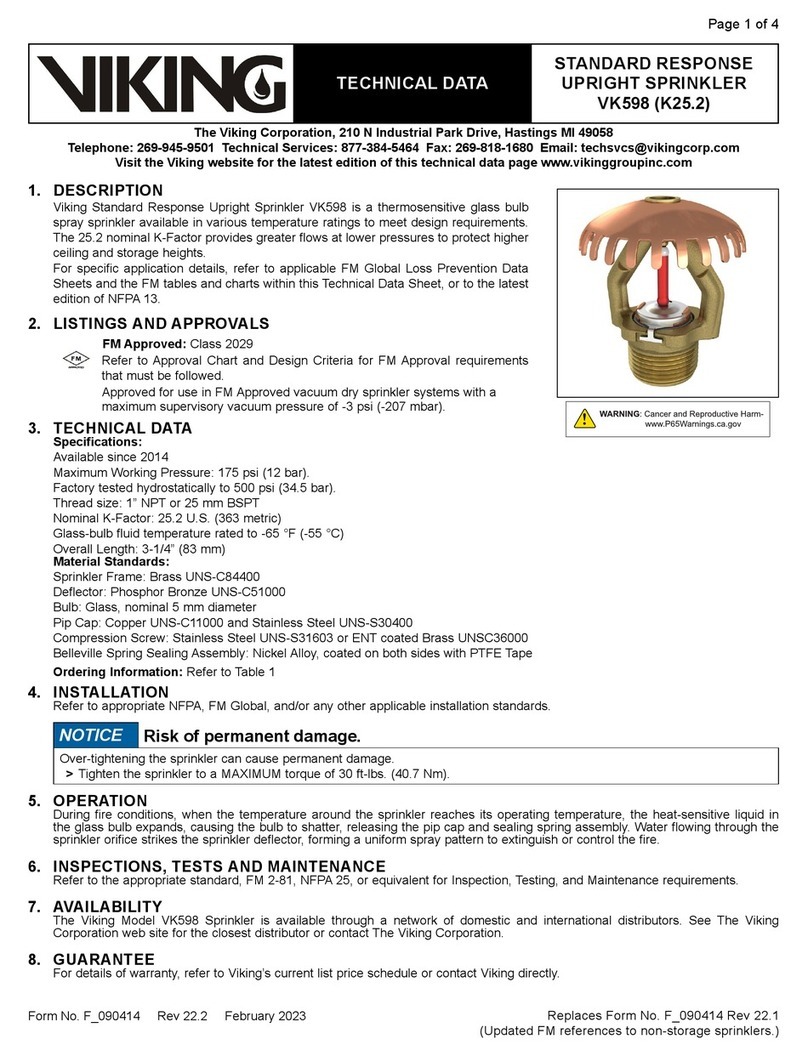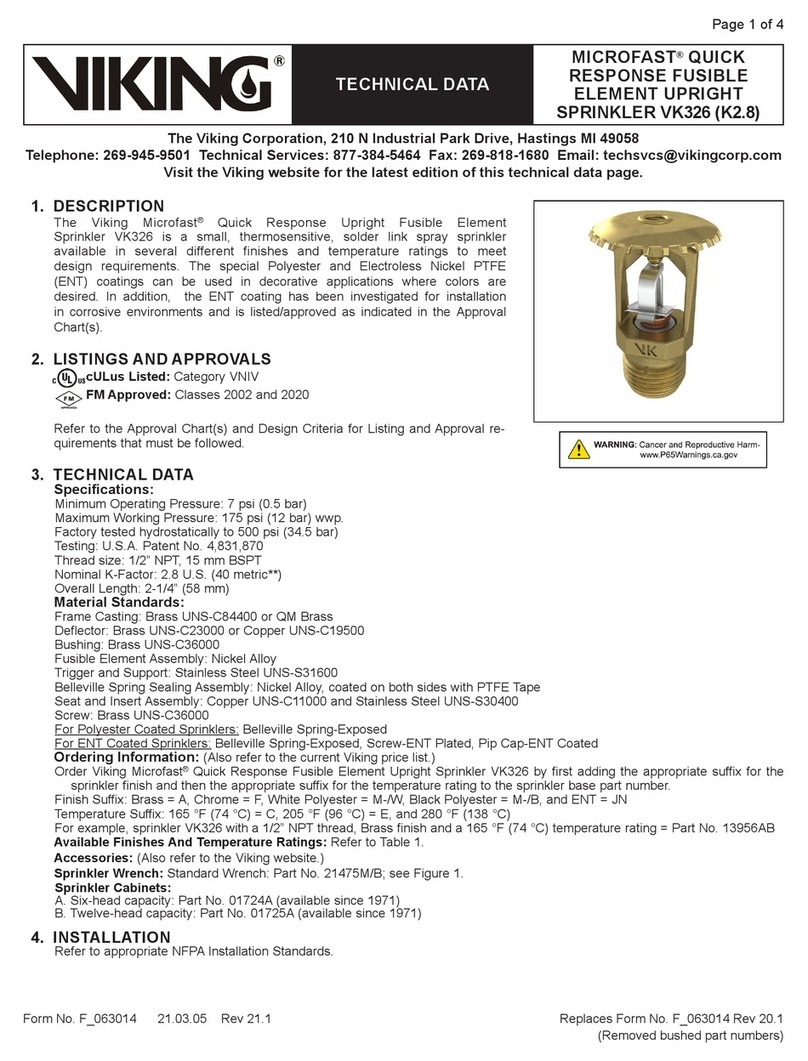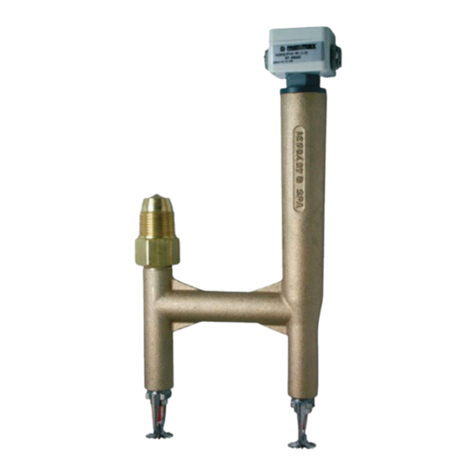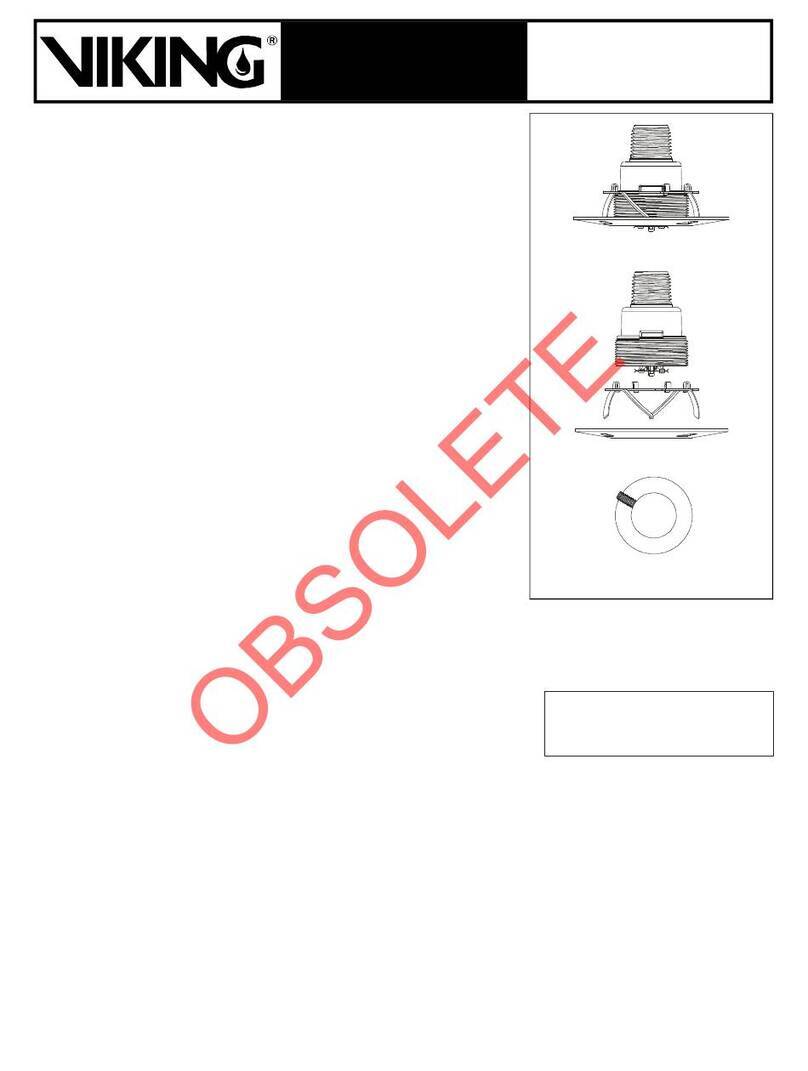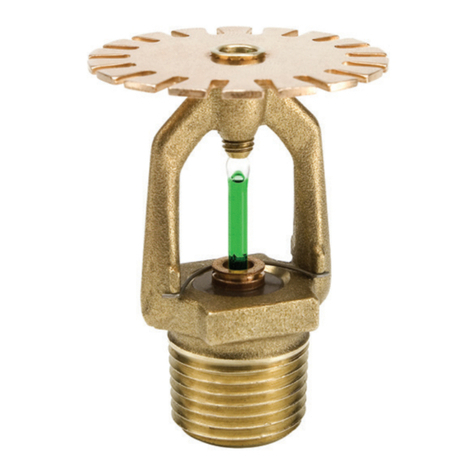
TECHNICAL DATA
March 28, 2013
The Viking Corporation, 210 N Industrial Park Drive, Hastings MI 49058
T
elephone:
269-945-9501
T
echnical
Services:
877-384-5464
Fax:
269-818-1680
Email:
[email protected]ESFR UPRIGHT SPRINKLER
SIN VK520 (K14.0)
DESIGN CRITERIA
(Also refer to the Approval Chart on page 121c.)
FM Approval Requirements:
1. Sprinkler VK520 is FM Approved as a quick response upright Storage sprinkler as indicated in the FM Approval Guide.
• For specific application and installation requirements, reference the latest applicable FM Loss Prevention Data Sheets (including Data Sheets
2-0 and 8-9).
2. Sprinkler VK520 is also FM Approved as a quick response upright Non-Storage sprinkler as indicated in the FM Approval Guide.
• For specific application and installation requirements, reference the latest applicable FM Loss Prevention Data Sheets (including Data Sheet 2-0).
FM Global Loss Prevention Data Sheets contain guidelines relating to, but not limited to: minimum water supply requirements, hydraulic design, ceiling
slope and obstructions, minimum and maximum allowable spacing, and deflector distance below the ceiling.
NOTE: The FM installation guidelines may differ from NFPA criteria.
IMPORTANT: Always refer to Bulletin Form No. F_091699 - Care and Handling of Sprinklers. Viking ESFR Upright
Sprinklers are to be installed in accordance with the latest edition of Viking technical data, the latest applicable
FM Global Loss Prevention Data Sheets, including 2-0 and 8-9, the latest applicable standards of VdS, NFPA, and
any other Authorities Having Jurisdiction, and also with provisions of governmental codes, ordinances, and stan-
dards whenever applicable.
• DO NOT use any other type of wrench, as this could damage the unit.
• DO NOT use the sprinkler deflector or fusible element to start or thread the sprinkler into a fitting.
• DO NOT exceed 50 ft. lbs. of torque (hand tight, plus approximately two full turns with the wrench) to install these sprinklers.
Higher levels of torque may distort the sprinkler inlet with consequent leakage or impairment of the sprinkler.
E. After installation, the entire sprinkler system must be tested. The test must be conducted to comply with the Installation
Standards. Make sure the sprinkler has been properly tightened. If a thread leak occurs, normally the unit must be removed, new
pipe-joint compound or tape applied, and then reinstalled. This is due to the fact that when the joint seal is damaged, the sealing
compound or tape is washed out of the joint. Immediately replace any damaged units, using the special sprinkler wrench only.
F. After installation and testing and repairing of all leaks, remove the protective caps from the sprinklers. Do NOT use any
type of tool to remove the cap. Remove the cap by hand: turn it slightly and pull it off the sprinkler. When removing
caps, use care to prevent dislodging or damaging sprinkler ejector spring and fusible element. THE CAPS MUST BE
REMOVED FROM SPRINKLERS BEFORE PLACING THE SYSTEM IN SERVICE!
G. System design must be based on ESFR design guidelines described in applicable FM Global Loss Prevention Data Sheets,
the National Fire Protection Association, and the Authorities Having Jurisdiction. NOTE: Viking recommends installing one
style of sprinklers (either pendent or upright) throughout ESFR systems. However, provided the fusible elements
are installed within the distance below the ceiling allowed by the installation standards, and when acceptable to the
Authority Having Jurisdiction, Viking considers the practice of mixing upright and pendent ESFR sprinklers to be ac-
ceptable.
5. OPERATION
During fire conditions, the heat-sensitive fusible element assembly disengages, releasing the seat and spring assemblies to open
the waterway. Water flowing through the sprinkler orifice strikes the sprinkler deflector, forming a uniform spray pattern to suppress
the fire.
6. INSPECTIONS, TESTS AND MAINTENANCE
NOTICE: The owner is responsible for maintaining the fire protection system and devices in proper operating condition. For
minimum maintenance and inspection requirements, refer to the NFPA standard that describes care and maintenance of sprinkler
systems. In addition, the Authorities Having Jurisdiction may have additional maintenance, testing, and inspection requirements
that must be followed.
A. The sprinklers must be inspected on a regular basis for corrosion, mechanical damage, obstructions, paint, etc. The frequency
of inspections may vary due to corrosive atmosphere, water supplies, and activity around the device.
Sprinkler 121d
